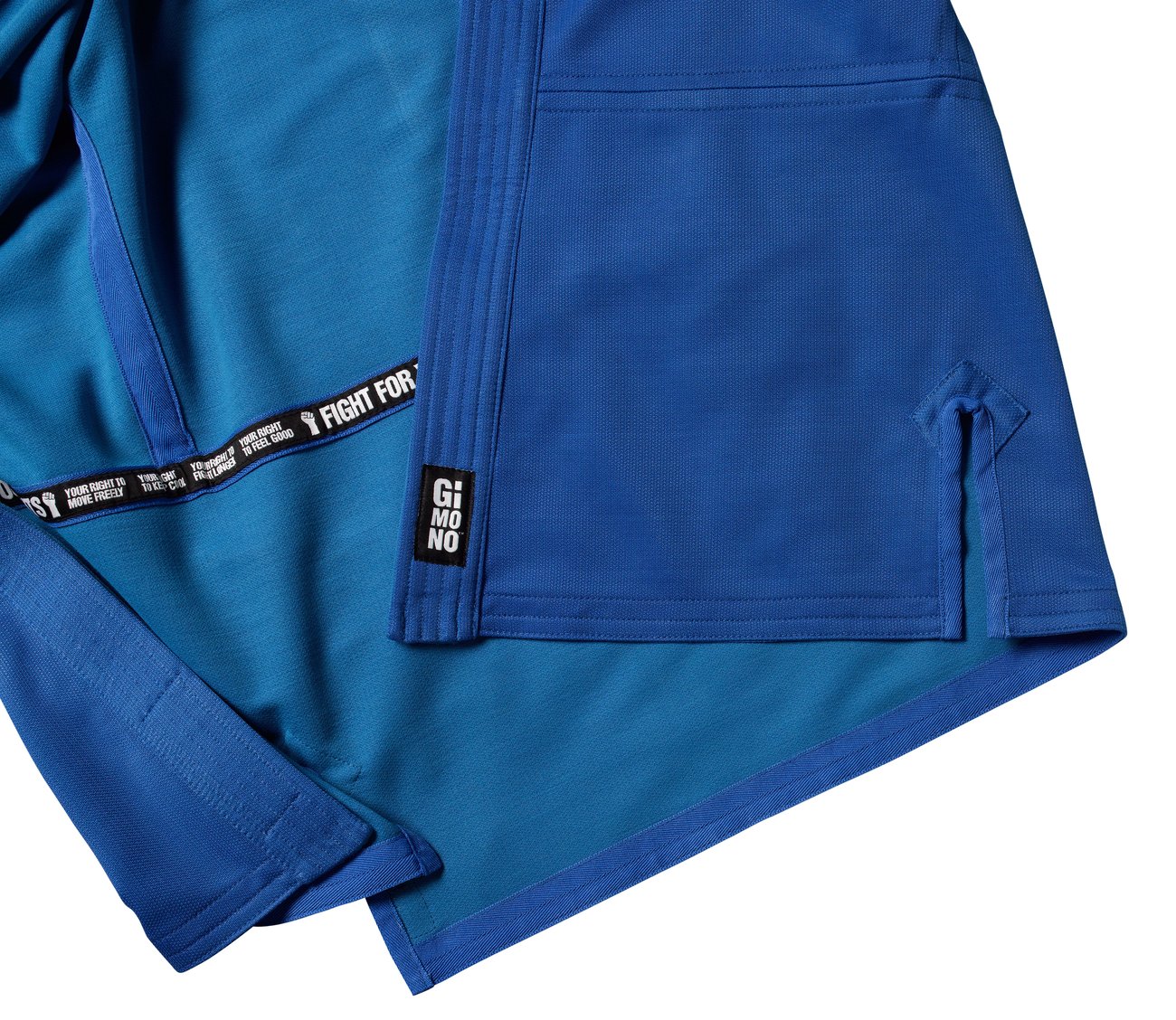
As Kiwis know, the potential of wool is endless. It’s warm, breathable, repels water and regulates temperature. So perfect for fighting, apparently!
GiMono, a martial arts apparel maker, worked with AgResearch over three years to develop Fortitude, a proprietary, fit-for-purpose performance textile that blends merino and polyester fibre. The merino wool layer next to the skin is for thermal regulation and the polyester outer layer is strong enough to be grabbed without tearing.

Co-founder Lavinia Calvert says it was easy to pinpoint the drawbacks of traditional fight wear. A traditional gi is made from double-woven cotton cloth, which enables it to withstand the stress of grabbing and throwing but is heavy and susceptible to odour. “We looked for an alternative fabric strong enough for grappling arts but we couldn’t find anything so we decided to develop our own.”
Merino alone would not be suitable for martial arts as it is easily pulled and can tear. Blending it with a high-strength synthetic fibre solved that problem and the result is a product that is 30 percent merino wool. Blending the synthetic material with merino to achieve these specific performance characteristics is somewhat uncommon and it took many years to get the balance just right.
Four different structures have been developed in the range, but three are yet to be commercialised. They will have slightly different characteristics to the Fortitude products on the market.
The strong fibre could be used for products as diverse as equestrian gear, military uniforms and hospital blankets. But Calvert says experts in the different areas would need to be able to identify the characteristics needed in each range. “The potential is great for this type of textile and we’re looking into opportunities to licence the technology so others can use it in their own applications,” she says.
Looking ahead, Calvert says there is going to be a growing importance of developing sustainable fibres and process. “The textile industry is no known for being sustainable and that’s the key driver for the evolution of Fortitude,” she says. “Merino is a great start but, ideally, we want the whole mix to be made of sustainable fibres. That’s what the world demands and it’s the smart thing to do.”
AgResearch science team leader, textiles, Stewart Collie says the rise of smart textiles has been bubbling under the surface for years. “It’s an area where things have taken a little bit longer to start generating commercial outcomes than people expected ten years ago.”
There is potential for the technology developed in the smart textiles industry to have practical applications in not just apparel, sports and performance areas, but also the health sector.
A growing emphasis is being placed on developing sustainable fibres and a growing market for bio-fibres, he says. “There is a desire to move away from petrochemical and there’s a mega-trend across many sectors towards naturalness.”
The smart textiles industry in New Zealand is centred on wool, as the only natural fibre ‘grown’ onshore and a new initiative jointly funded by the Ministry of Business, Innovation and Employment and the Wool Research Organisation of New Zealand is set to research new uses of wool, with a focus on crossbred wool.
“Wool is the fibre of interest in New Zealand and a lot of work goes into looking at the traditional uses such as floor coverings and apparel but emerging uses are developing as well,” Collie says.
More amazing tech textiles
Aquafil’s sustainable ECONYL yarn is made from 100 percent regenerated nylon waste materials like fishing nets and carpets. The ECONYL Regeneration System offers products with the purity and performance characteristics equal to ‘virgin’ quality products. The Italian manufacturer has partnered with the likes of Levi Strauss & Co, Kelly Slater and Speedo to produce jeans, menswear and swimwear respectively.
Adidas demonstrated how the footwear industry could rethink design and help stop ocean plastic pollution with a concept shoe that uses yarns and filaments reclaimed and recycled from plastic ocean waste. The midsole of the shoe is 3D printed and comprises of recycled polyester and gillnets. The footwear company partnered with Parley for the Oceans to create the product.

Creating a safe environment for babies to sleep in is a top priority for parents, and the Newton Wovenaire Crib Mattress does just that. Made to facilitate airflow, the Wovenaire core is 90 percent air and 10 percent food grade polymer meaning the design significantly reduces risk of suffocation. The movement of air also helps regulate the baby’s body temperature. To make it even more impressive, the mattress is 100 percent recyclable.

A German startup has proved it’s OK to think outside the box when it comes to producing new sustainable fibres. Qmilk, founded by Anke Dosmaske, spins fibres out of milk. It feels like silk and is temperature regulating, light, absorbent, compostable and flame resistant.
Spider silk is one of the most resilient natural fibres. Certain types of spider can produce silk that is more durable ad elastic than any natural or synthetic fibre. Outerwear brand The North Face teamed up with Japanese company Spiber to created the Moon Parka made out of QMONOS, an all-new fibre made from bioengineered bacteria that has the same look and feel as spider silk.



